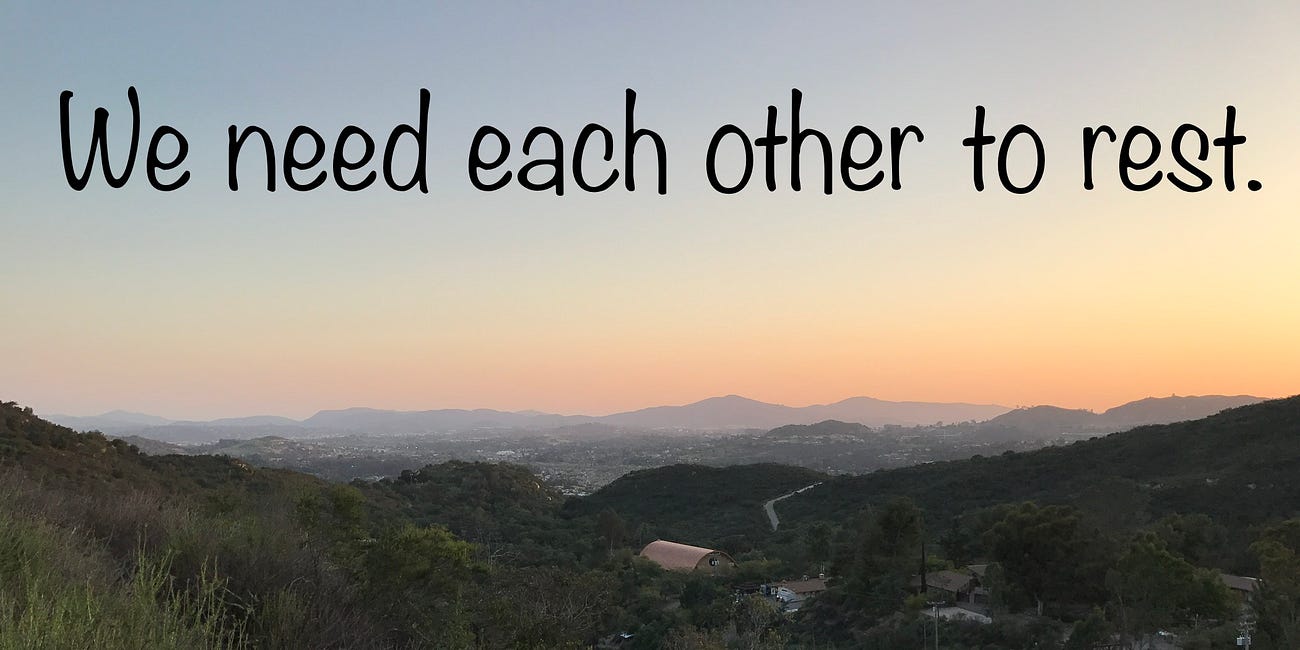Rest is peace: A collective rest and art workshop
A dream that became a workshop that became an art gallery
Dear beloved readers,
This post has been in the works since Enchantable was born almost a year ago (!!!). It started with a dream I had, that inspired a workshop we offered students, which then became an art gallery in our office suite, which now becomes a resource to share with you! We just had our second iteration of the workshop/playshop/restshop with our students, so it feels like a ripe time to share it with you. I share the workshop plan below in the hopes that you might use it with groups you work with or are a part of. You could even do it alone, but I highly recommend trying it with a friend or group. For more activity guides like this, you can visit the Guides tab on the Enchantable Subtack site. Enjoy! :)
The Dream
Dream journal notes -January 22, 2022
I am at this UPEACE event. The students are on break. The event is something celebratory. I am running into people and talking to them. Then I see this group of students sitting together and I wasn’t going to stop (I was on my way somewhere and it was out of my way, I could’ve just waved) but I go stop and say hi. I ask them how their break is going (we are in the middle of the break week at this point) and they all say how great it’s going and they seem so refreshed. And I say something about how their brains are finally getting to settle and there’s probably all these important connections happening without trying and without any work because their minds are having a chance to settle, and without putting anything new into them. We talk about how this break is under threat of being cut and it probably won’t affect them but will affect next year (and me). “Rest is peace!” I yell. I think about Tricia Hersey and wonder if they’re familiar with her work. And I say if I have a say in it, and a chance to use my voice, I will.
I woke up from this dream with those words ringing. Rest is peace! It was a declaration. It was also the kind of dream that stays with you long after you wake up. It felt louder than the rest of the dream. It was a message that wanted to be heard.
First I drew the words. They felt like they wanted to be played with.
The dream came at a time when we were in the midst of planning our quarterly seminar for our department. Students were tired and burned out, not having had any breaks between our intensive classes. I had the idea use this as the theme of our workshop with them. Here is how it flowed.
The Rest is Peace Workshop
Time: 2-3 hours: You can make it longer or shorter depending on how long you give to rest, art-making, and sharing. We have run it twice, once for two hours and once for three hours, and both worked well. You could also do the first two or three steps on your own as a solo reflection exercise. As with everything I share, feel free to adapt as needed!
Preparation: if you are going to invite folks to go outside, tell them ahead of time to bring a blanket or a mat if they would like it to lie in the grass. Bring all the art supplies you can muster!
I made slides with these instructions on Canva (I am a Canva novice - excuse the basic level! :). Feel free to use, download, adapt, etc.
Arrive (5 min.): Welcome everyone and give an overview of your time together, which will hopefully allow people to rest with greater ease. You might invite folks to internally or verbally check in and see how they are feeling at the start of your time together.
Rest: Take 20-30 minutes for collective rest. We gave folks about 5 minutes to find a spot outside and get settled. We shared a short body scan practice that they could use if they wanted, or they could just rest on their own.
Individual reflection and art (15 min.): Upon returning, we invited people to stay in this restful, quiet space, and used the following prompt:
Draw an image that came up while you were resting, or write about or draw an image that represents where you are on your UPEACE journey (depending on the group you are working with, you can tailor the prompt according to their needs and your group’s purpose).Bridging past, present, and future - Pair sharing (20 min. total, 10 min. sharing each): Find a partner, and share about the image, as it connects to the arc of their journey at UPEACE. We invited students to bring in their learning goals which they set at the beginning of the year, as well as think about their graduation projects and next steps. This was to allow them to reflect together and give each other feedback.
Collaborative art (30 min.): We had students get together according to their master’s degree programs, to share their images, and to make a collective piece of artwork putting their images and ideas together (this could be coming up with a new image that synthesizes the themes, or a collage that brings the images together, etc.). You can create groups randomly or in whatever way makes sense for your community.
Gallery walk (5-10 min.): We did not actually do this step, but I think it would be a really nice addition. Have each group put their artwork on the walls and invite people to walk through and observe the art before it is explained. This could be silently or not.
Large group sharing (20-30 min.): Each group described their artwork to the main group, sharing about the process and meaning of their creation.
Closing: Depending on time, you could have folks close with one word (how are they feeling at the end of the workshop) or with some general reflections on the process.
The Art Gallery
Our office suite is now an art gallery of the rest is peace artwork. Here is some of the artwork:
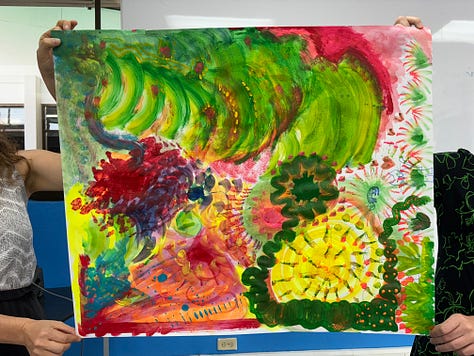
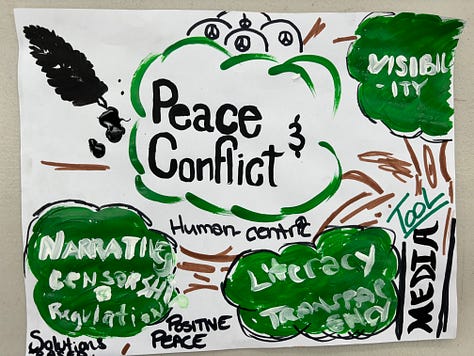
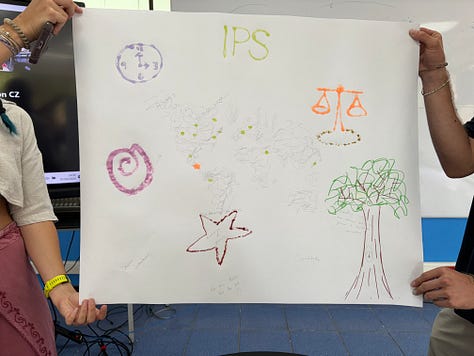
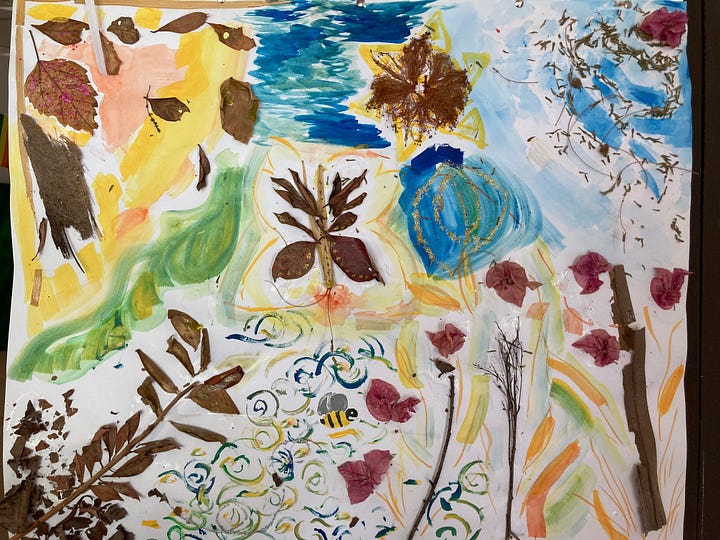
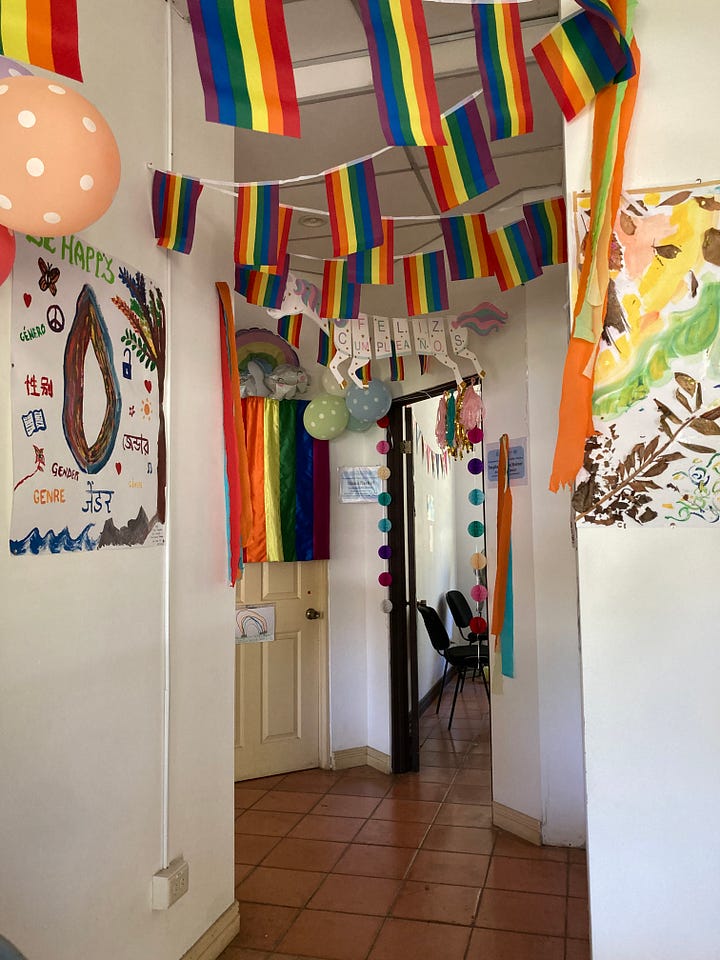
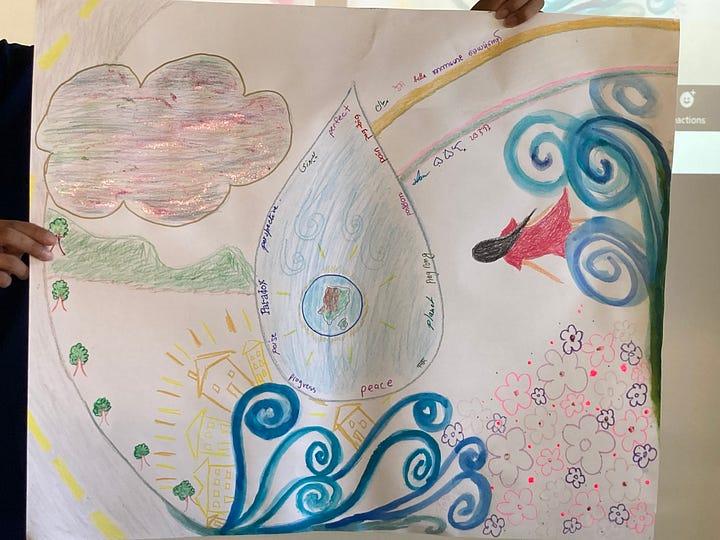
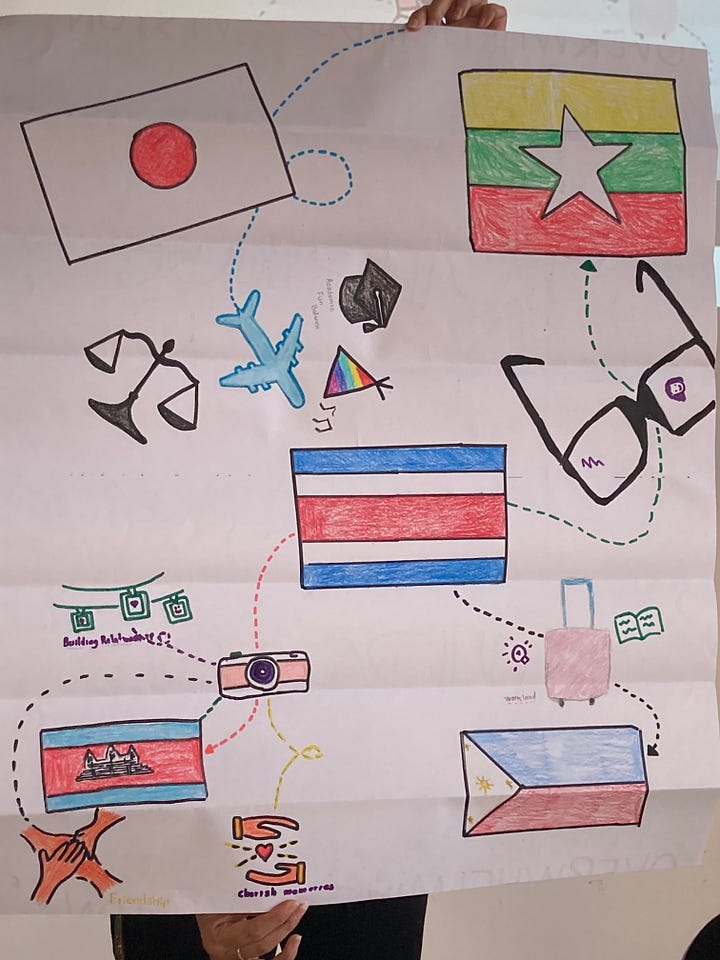
Closing reflections
Rest is peace. There is a lot to unpack about the initial dream, but it was definitely inspired by the undervalued necessity of rest and downtime as a part of the learning process (and of course, as a part of life). In terms of re-imagining education, this feels essential to me. Students (and professors and teachers!) need time to rest to integrate learning. We can’t be consuming and taking in all the time. Rest is an essential part of the learning process, and we should value it as such.
As I wrote in my most recent post about unschooling, I have been dreaming with my daughter about her next year of school (or unschool). I asked her if she wanted to draw her dream school, and she drew a building that had three parts: a relaxation area, a learning area, and a cafeteria. She intuitively and experientially knows that rest, relaxation, and breaks are an integral and essential part of learning (as is nourishing food). Kids know.
Rest is resistance, as the Nap Ministry’s Trisha Hersey declares. We read an excerpt from her book in our session on everyday resistance in our class on nonviolence. I have the Nap Ministry’s Rest Deck sitting on my desk at work, and love it when students and colleagues stop by to draw a card. I have been using the deck a lot in my facilitation this year, including at this weekend’s re-imagining education conversation at the Gross Global Happiness summit. I highly recommend the deck and her book. I listened to it on audiobook and it was such a soothing and healing experience. In adding these links for this piece, I learned she is coming out with an album which I am so excited about!
Our creativity needs us to rest, and this is part of the purpose of the workshop as well. What space opens up for creativity and reflection when we feel rested? What connections become possible when we cultivate spaciousness? Rest is essential for our creativity.
For more on this theme, see last year’s post:
We need each other to rest
We need each other to rest. This is what I have been thinking about since class yesterday. The theme of the day was everyday resistance in the context of nonviolent social movements. I had the students read an excerpt from Tricia Hersey’s (@thenapministry) book
Wishing you abundant and deep rest,
Stephanie







